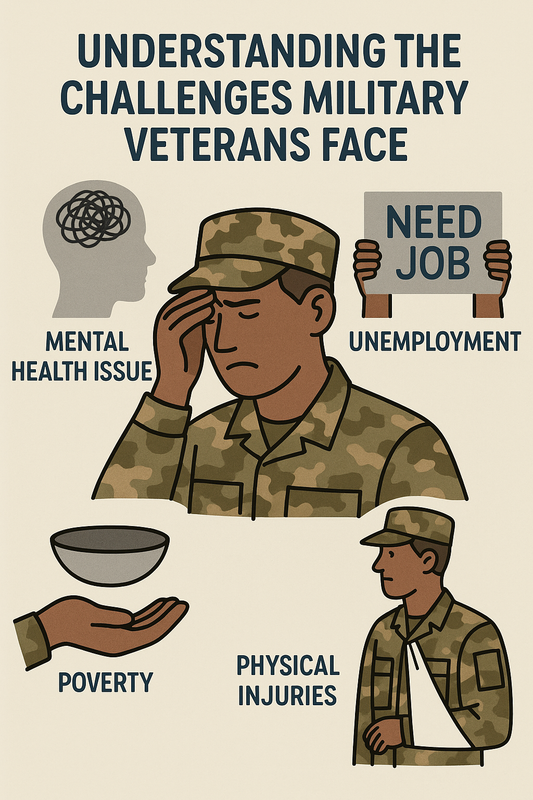
Beat Burnout: Wellness Tips for Health Care Workers
Frequently Asked Questions
1. What is burnout in health care professionals?
2. What are the common signs of burnout?
3. What are some root causes of burnout in health care settings?
4. How can health care workers combat burnout effectively?
5. Why is addressing burnout important for patient care?
Burnout in medical and health care workers has become a pressing issue. As the demands of patient care increase, so do the challenges faced by those in the field. Identifying the signs of burnout, understanding its causes, and implementing effective strategies can help health care professionals reclaim their passion and purpose. In this guide, we'll explore practical solutions to combat burnout, share wellness tips, and highlight the importance of community support.
The Rise of Burnout in Health Care Fields
Recent studies reveal alarming statistics about burnout among health care professionals. A survey conducted by the American Medical Association showed that over 40% of physicians experience symptoms of burnout, while similar trends are observed among nurses, therapists, and health educators. Factors contributing to burnout include prolonged work hours, emotional strain, and inadequate resources.
Understanding Burnout: What It Is and Why It Matters
Burnout is more than just feeling tired. It's a complex syndrome characterized by emotional exhaustion, depersonalization, and a diminished sense of personal accomplishment. For medical and health care workers, this can lead to decreased productivity, increased error rates, and a negative impact on patient care.
Recognizing the high stakes involved is crucial. When health care providers experience burnout, it doesn't just affect them; it can also compromise patient care. Therefore, addressing this issue is not only a matter of personal well-being but a critical component of the health care system as a whole.
Identifying the Signs of Burnout
Understanding the symptoms of burnout is the first step toward addressing it. Here are some common signs that health care workers should look out for:
- Emotional Exhaustion: Feeling drained or fatigued, often struggling to find energy for even the simplest tasks.
- Depersonalization: Treating patients with a lack of empathy, which can result in an emotional disconnect.
- Reduced Accomplishment: Feeling ineffective or questioning one’s own competence.
- Cynicism and Detachment: Developing a negative outlook towards work and the people you care for.
- Physical Symptoms: Chronic headaches, sleep disturbances, or gastrointestinal issues may manifest as a result of stress.
Root Causes of Burnout in Health Care Workers
Several factors can contribute to burnout in medical and health care settings:
- Increased Workload: With a rising number of patients and limited resources, health care workers often face excessive demands.
- Lack of Control: Feeling powerless over work situations can exacerbate stress and lead to feelings of burnout.
- Insufficient Support: A lack of emotional and structural support from colleagues and management can leave individuals feeling isolated.
- Work-Life Imbalance: Professionals often struggle to maintain a healthy balance, leading to neglecting personal needs.
- Changing Health Care Policies: Rapid changes in regulations and healthcare practices can cause confusion and stress.
Strategies to Address and Combat Burnout
Effectively addressing burnout requires a multifaceted approach. Here are actionable strategies for medical and health care workers, along with educators, to improve well-being:
1. Prioritize Self-Care
Self-care is not a luxury; it is a necessity. Carving out time for personal well-being can make a significant difference.
- Nutrition: Focus on nourishing foods to fuel your body. Consider incorporating nutrient-dense options like hazelnut coffee, which can provide both a comforting beverage and essential nutrients.
- Exercise: Find activities you enjoy, whether it's yoga, running, or dancing. Regular physical activity can combat stress.
- Sleep: Prioritize quality sleep. Create a restful environment to enhance relaxation and recovery.
2. Build a Support Network
Loneliness can amplify feelings of burnout. Connect with colleagues, friends, and mentors who understand the challenges faced in the health care field.
- Peer Support Groups: Consider forming or joining groups where you can share experiences and coping strategies.
- Mentorship: Seek out mentors who can provide guidance and understanding of the unique pressures within the profession.
- Professional Counseling: Embrace mental health support from professionals trained to help navigate workplace stress and emotional challenges.
3. Establish Boundaries
Setting boundaries is essential for maintaining a healthy work-life balance. This can involve learning to say “no” and managing time effectively.
- Digital Detox: Limit work-related communications outside of hours to create space for personal life.
- Regular Breaks: Schedule short breaks throughout the workday to recharge and prevent exhaustion.
- Limit Overtime: Monitor work hours and avoid overcommitment, ensuring time is allocated for personal interests.
4. Engage in Professional Development
Continuing education can reignite passion for your profession. Seek out training programs, workshops, or conferences that align with your interests.
- New Skills: Learning new techniques or gaining information in emerging fields can inspire and motivate.
- Networking Opportunities: Engaging with industry peers can provide fresh perspectives and foster community.
- Crossover with Other Fields: Educators can also play a role by collaborating with health professionals to innovate patient approaches.
Integrating Mindfulness and Stress Management Techniques
Mindfulness practices can be particularly effective in managing stress. Implement these techniques to cultivate a sense of calm:
- Meditation: Dedicate even just a few minutes each day to meditation to calm the mind and center yourself.
- Breathing Exercises: Practice deep breathing to reduce tension in stressful situations.
- Gratitude Journaling: Maintain a journal to reflect on positive experiences, fostering resilience against negativity.
Reigniting Your Passion for Care
Burnout can leave health care professionals feeling disillusioned and detached. To rekindle passion for your work, consider the following:
- Reconnect with Your 'Why': Remind yourself of the fundamental reasons you entered the health care field. Embrace the profound impact you have on patients' lives.
- Celebrate Small Wins: Acknowledge daily successes, no matter how minimal. Recognizing achievements can restore a sense of accomplishment.
- Encourage Creativity: Allow space for creative solutions in patient care or problem-solving. Innovation can provide a renewed sense of purpose.
A Call to Action: Creating a Healthier Workplace
Organizations and institutions play a crucial role in preventing burnout by creating a supportive environment. Here are ways to contribute positively to workplace culture:
- Open Dialogue: Encourage conversations around mental health and burnout, making resources available.
- Flexible Policies: Promote work-life balance policies that allow staff to prioritize personal well-being.
- Recognition Programs: Implement recognition initiatives that celebrate the hard work and dedication of health care professionals.
Final Thoughts: Your Well-Being Matters!
Addressing burnout in medical and health care workers is imperative for overall workplace wellness. By recognizing the signs, understanding the root causes, and implementing effective coping strategies, we can foster a healthier environment for ourselves and our colleagues. Remember, self-care isn't selfish—it's essential. Prioritize your well-being, engage with your support network, and reignite your passion for caring. Let's work together to create a thriving health care community where everyone is championed, and burnout is a thing of the past!




